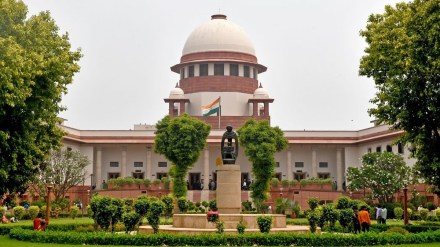By Sanjeev Nayyar
A former High Court (HC) judge Dama Naidu said in an interview that “if you want real talent for the judiciary, the position should be more remunerative.” The comparison was perhaps with the earnings from the bar.
While the remuneration of senior advocates in practice cannot be compared, it is important that the remuneration of HC and Supreme Court (SC) judges be looked at from the cost-to-government angle and not basic pay.
According to the department of justice, GOI, “Salaries, pension etc. in respect of Judges of SC are governed by the SC Judges (Salaries and Conditions of Service) Act, 1958 and of High Court (HC) judges by HC Judges (Salaries and Conditions of Service) Act, 1954.”
Thus, while comparing remuneration of judges and those in private practice, it is important to compare the cost incurred by the government and include grossing up for tax-free perquisites.
The Centre amended the SC Judges Rules last year to provide for chauffeurs and domestic workers for retired CJIs and SC judges for their entire lifetime. This is apart from the ceremonial lounge facility at airports for retired CJIs, SC judges and chief justices of High Courts. Also, the Maharashtra government would give a monthly allowance of Rs 20,000 per month to retired HC judges towards housekeeping, telephone and driver expenses.
Beyond all this, there are certain non-monetary benefits enjoyed, such as the elevated status in society, the high degree of responsibility vested in the opportunity to serve the nation, the range of experience that boosts professional growth, the power to effect positive societal change, the enhanced chances of a lucrative post-retirement practice, unspoken influence in the corridors of power, job security (impeachment is rare), etc.
It can be argue that there is uncertainty post retirement. Can retired judges afford the lifestyle they have enjoyed so far? If they are from a smaller town, can they buy a house in the state capital since their children have got used to city life? Comparing notes with retired lieutentant generals might help reduce stress on post retirement uncertainty!
Most become judges in the higher judiciary between 45-55 years of age; so, having achieved success and probably wealth, they could be looking
for a deeper purpose in life. For those who come up the ranks, the above remuneration may be attractive; for other judges, it could be considered inadequate.
Recently, a retired judge of the Delhi HC, Justice Poonam Bamba, said that judges have little work-life balance. We empathise. Hopefully, the use of technology and the National Judicial Data Grid can help identify bottlenecks in the judicial process.
A few suggestions.
The salary is revised once in 10 years, subsequent to the Pay Commission report. Should it be revised once in five years instead? There is no system of annual increment for judges. So, a HC judge who joined in 2023 will get the same base pay as one who joined in 2018. A performer and non-performer get the same basic pay. I am not suggesting any performance bonus.
An increment system needs a Performance Appraisal System and determination of Key Result Areas for each judge. Can the higher judiciary take up a HR role? Also, can HRA be determined region-wise, accounting for varying costs-of-living?
Should we compare the workload in Indian courts with that in, say, the US whilst deciding remuneration of judges? It is instructive to read senior advocate Birendra Saraf’s views in The Indian Express.
Working in the higher judiciary has to be positioned as a long-term career opportunity if talent has to be attracted and retained. This matter requires deeper study, an open mind and being better informed.
Sanjeev Nayyar, senior chartered accountant and founder, esamskriti.com
